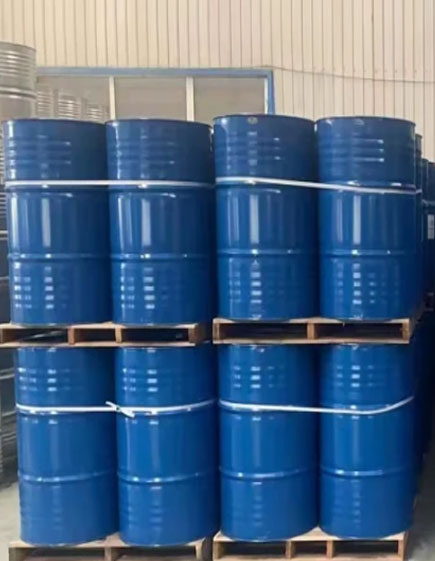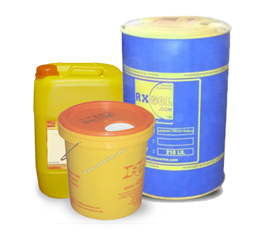Alphabets Search
Product Search
Categories
- --None--
- Agriculture-94
- Air Lines-36
- Asphalt Release / Products-90
- Automobiles-41
- Ballast Tank Chem-23
- Boiler Chemicals-42
- Carbon Coal Charcoal-26
- Clean Air deodorizer-24
- Construction Chem-67
- Coolant Glycol Antifreeze-27
- Cooling Water Chemical-43
- Corrosion Inhibitor-44
- Deck cabin galley Maintenance-25
- Degreaser-10
- Detergent & Soap-12
- Drain Clean Products-29
- Drilling Fluids & Mud Oil Field chemicals-81
- Electrical Cleaner-30
- Engine room Maintenance-16
- Evaporator Treat-51
- Floor Care ( Polish / Cleaner ) -13
- Foundry Ind Chemicals-54
- Fuel Treatment-70
- Gasses-66
- GREASES-92
- Hand Wash / Personal care-14
- Hold Solution-22
- House / HOTEL & CATERING-15
- Lab Chemical-60
- Lab Equipment-61
- Laundry Chemicals-26
- Leather Chem-96
- Medicine-95
- Metal Treatment-68
- Oil Spill Chem & Accessory -17
- Paint and Cleaning solvent-18
- Passivation-38
- Power Plant / Heavy Industries-37
- Pump & Accessory-21
- Radiator and AC coil cleaner-39
- Railway Maintenance-35
- Raw Chemicals-19
- RIGS Oil Field-34
- RO Chemicals-33
- Rubber Chemicals-93
- Rust Clean & Protect-28
- Safety Item-64
- Scale Remover-11
- Sewage Chemicals Treatment-40
- Stains Indicator Reagents-69
- Swimming Pool & Spa-31
- Tank Cleaner-20
- Test Kit For Water-62
- Textiles / Looms-91
- Wall Wash Test Kit-63
- Water Filter, Vessel, Softner, Accessory-32
- Water Treatment-40
- Wrench & Tools-65
Silver Nitrate( Acidified ) – 500 ml Btl
Silver Nitrate , chemical compound, AgNO3, a colorless crystalline material that is very soluble in water. The most important compound of silver, it is used in the preparation of silver salts for photography, in chemical analysis, in silver plating, in in
1.00Bottle Liq
Product Description
Silver Nitrate , chemical compound, AgNO3, a colorless liquid solution. For Silver nitrate crystal pl. click here http://rxmarine.com/Silver-Nitrate-Solid-Crystal-Ar
Product Technical bulletin

| Product Name | RXSOL-60-6108-500 |
| Product Type | Silver Nitrate Acidified Normal Solution |
Company Details:
RX MARINE INTERNATIONAL
105, A wing , BSEL , TECH PARK.
VASHI ,NEW BOMBAY 400703 INDIA
| Phone | +91 22 65113333 / 5555 / 9999 |
| Fax | +91 22 2781 1318 :::AOH :0091 9821214367 |
| mail@rxmarine.com |

| SARA 313 Component | CAS Number |
Dimension |
Exposure Limits |
| Silver Nitrate | CAS# 7761- 88-8 | W/V |
OSHA PEL 0.01 |
| Water, Deionized ASTM Type II | CAS# 7732-18-5 | V/V |
None Established |

May be harmful if swallowed. May cause irritation. Avoid breathing vapors, or dusts. Use with adequate ventilation. Avoid contact with eyes, skin, and clothes. Wash thoroughly after handling.
Emergency Overview: Warning! Causes Severe Eye Irritation. Harmful If Swallowed Or Inhaled.
Causes Irritation To Skin And Respiratory Tract. Affects Eyes, Skin And Respiratory Tract.
Inhalation: Effects are Expected to be Less Severe than for Exposure to Higher Concentrations
where Symptoms Include Irritation to the Respiratory Tract with Coughing and Shortness of
Breath.
Ingestion: Effects should be Less Severe than Through Exposure to Higher Concentrations of
Silver Nitratewhich may Include Symptoms of Pain and Burning in Mouth, Blackening of the Skin and Mucous Membranes,Throat and Abdomen, Diarrhea and Shock. A Poison in Higher
Concentrations.
Skin: Effects are Expected to be Less Severe than from Exposure to Higher Concentrations where Symptoms Include Irritation to the Skin with Redness, Itching and Pain. May Cause Bluish Discoloration of Skin.
Eye Contact: Effects should be Less Severe than from Exposure to Higher Concentrations where Symptoms Include Blurred Vision, Redness, Pain and Burns to Eye Tissue and Possible Permanent Eye Damage.
Chronic Exposure: Repeated Application, Inhalation, or Ingestion of Silver Nitrate can Cause
Permanent Bluish Discoloration of the Skin, Conjunctiva and Mucous Membrane.
Aggravated by Exposure: Persons with Pre-Existing skin Disorders or Eye Disease May be more Susceptible to the Effects to this Substance.

May be harmful if swallowed. May cause irritation. Avoid breathing vapors, or dusts. Use with adequate ventilation. Avoid contact with eyes, skin, and clothes. Wash thoroughly after handling.
|
SKIN: |
Wash exposed area with soap and water. If irritation persists, seek |
| EYES: |
Wash eyes with plenty of water for at least 15 minutes, lifting lids occasionally. Seek Medical Aid. INHALATION: Remove to fresh air. If not breathing, give artificial respiration. If breathing is difficult, give oxygen |
| INGESTION: |
If swallowed, induce vomiting immediately after giving two glasses of water. Never give anything by mouth to an unconscious person. |

|
Fire Extinguisher Type: |
Any means suitable for extinguishing |
| Fire / Explosion Hazards: | None |
| Fire Fighting Procedure: | Wear self-contained breathing apparatus and protective clothing to prevent contact with skin and clothing. |

Absorb spill with inert material, then place in a chemical waste container. Dispose of in a manner consistent with federal, local law.
Ventilate area of Leak or Spill. Wear Appropriate Personal Protective Equipment as Specified in Section 8. Contain and Recover Liquid when Possible. Collect Liquid in an Appropriate Container or Absorb with an Inert Material (e.g., Vermiculite, Dry Sand, Earth), and Place in a in a Chemical Waste Container. Do Not Use Combustible Materials, such as Saw Dust. Do Not Flush to Sewer! S Regulations (CERCLA) Require Reporting Spills and Releases to Soil, Water and Air in Excess of Reportable Quantities.

Store in a cool dry place. Do not get in eyes, on skin, on clothing. Wash thoroughly after handling

|
Respiratory Protection |
None required |
| Ventilation | Local |
| OTHER | Mechanical |
| Protective Gloves | Gloves to prevent skin exposure as rubber or vinyl |
| EYE PROTECTION | Splash Goggles |
| Other Protective Equipment |
Wear appropriate clothing to prevent skin exposure |

| BOILING POINT | ~100° C |
| VAPOR PRESSURE | not available |
| MELTING POINT | ~0° C |
| VAPOR DENSITY | not available |
| EVAPORATION RATE | 1 |
| Appearance /Odors | Colorless odorless liquid |
| Flash Point | Not flammable |
| Specific Gravity | 1 |
| Percent Volatile by | >99% |
| Evaporation Standard | Water =1 |
| Auto Ignition Temp |
Not applicable |
| Lower Flamm. Limit in Air |
Not applicable |
| Upper Flamm. Limit in Air |
Not applicable |
| Solubility in Water | Soluble |

|
STABILITY |
Stable |
|
CONDITIONS TO AVOID |
High temperatures, Light |
|
MATERIALS TO AVOID |
Halides, Ammonia, Phospahtes |
|
HAZARDOUS DECOMPOSITION PRODUCTS |
None known |
|
HAZARDOUS POLYMERIZATION |
Will Not Occur |
| Conditions to Avoid | None known |

Carcinogenic References: NTP Carcinogen – Known: No, IARC Category- None

Environmental Fate:No information found
Environmental Toxicity:No information found

Whatever cannot be saved for recovery or recycling should be managed in an appropriate and
approved waste facility. Although not a listed RCRA hazardous waste, this material may exhibit
one or more characteristics of a hazardous waste and require appropriate analysis to determine specific disposal requirements. Processing, use or contamination of this product may change the waste management options. State and local disposal regulations may differ from federal disposal regulations. Dispose of container and unused contents in accordance with federal, state and local requirements.

DOT Classification: Not Regulated
DOT Regulations may change from time to time. Please consult the most recent D.O.T. regulations.

Chemical Inventory Status –
Part 1:Ingrdient
Silver Nitrate (7761-88-8)
TSCA Yes
EC Yes
Japan YES
Australia Yes
Chemical Inventory Status –
Part 2:Ingredient
Silver Nitrate (7761-88-8)
Korea Yes
DSL Yes
NDSL No
Phil. Yes
Federal, State & International Regulations –
Part 1: Ingredient.
Silver Nitrate (7761-88-8)
RQ No
TPQ No
List NO
Chemical Catg SILVER COMPD
Federal, State &
International Regulations –
Part 2:Ingredient
Silver Nitrate (7761-88-8)
CERCLA 1
261.33 No
8(d) No
Chemical Weapons Convention: No
TSCA 12 (b):No
CDTA:No MIXTURE/LIQUID
SARA 311/312: Acute:YES
Chronic: YES
Fire: No
Pressure: No
Reactivity: No
Australian Hazchem Code: 2X
Poison Schedule:NONE ALLOCATED

Conditions aggravated/target organs: Persons with pre-existing skin, eye or respiratory disorders are more susceptible. Overexposure symptoms. Acute: Slight irritation to skin, eyes, mucous membranes, and GI tract. Stains skin. Chronic: Permanent
Flammability
Health Reactivity
|
Revisions |
NFPA |
| 7/30/2010 |
0.1 updated msds to 16 section from 10 section msds. STN |
| 0 |
The information herein is believed to be accurate and is offered in good faith for the user’s consideration and investigation. No warranty either expressed or implied is made for the completeness or accuracy of the information whether originating from the above mentioned company or not. Users of this material should satisfy themselves by independent investigation of current scientific and medical knowledge that the material
Product label
Silver Nitrate , chemical compound, AgNO3, a colorless crystalline material that is very soluble in water. The most important compound of silver, it is used in the preparation of silver salts for photography, in chemical analysis, in silver plating, in inks and hair dyes, and to silver mirrors. It is used in medicine in the treatment of eye infections and gonorrhea. Fused silver nitrate is also called lunar caustic. Taken internally silver nitrate is a poison. It is prepared by reaction of nitric acid with silver, and purified by recrystallization. It is darkened by sunlight or contact with organic matter such as the skin.

Request for Quote and Get Heavy Discount on Price

